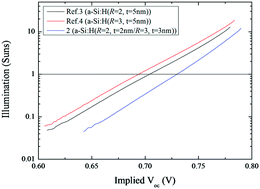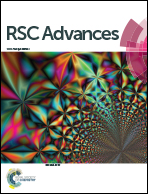Improved amorphous/crystalline silicon interface passivation with two-step intrinsic layers
Abstract
A novel way of two-step intrinsic (i) layers growth process was described to improve amorphous/crystalline silicon (a-Si:H/c-Si) interface passivation. This effort was guided by the study of the relationship between the bulk photoelectrical properties of a-Si:H film using a variable H2-dilution gas flow ratio R = [H2/SiH4] and the passivation results of the amorphous/crystalline silicon interface. The results demonstrated that the a-Si:H/c-Si interface had more dominating influence on passivation than the bulk of a-Si:H films. However, when no epitaxial growth occurred on the a-Si:H/c-Si interface, the bulk quality of the a-Si:H film had a significant effect on passivation. The optimum two-step process was designed as follows: the initial stage of the i-layer was deposited at a lower R than the bulk to ensure that the interface remained within the amorphous phase and the second stage involved deposition using the optimum bulk a-Si:H film process to obtain the best quality of the passivated film. Although only a 5 nm thick passivated film was deposited on the polished Cz-Si wafers, the optimum effective lifetime was up to 1.7 ms. After annealing, the effective lifetime could be further increased to 2.5 ms and the corresponding implied Voc was up to 0.724 V.


 Please wait while we load your content...
Please wait while we load your content...